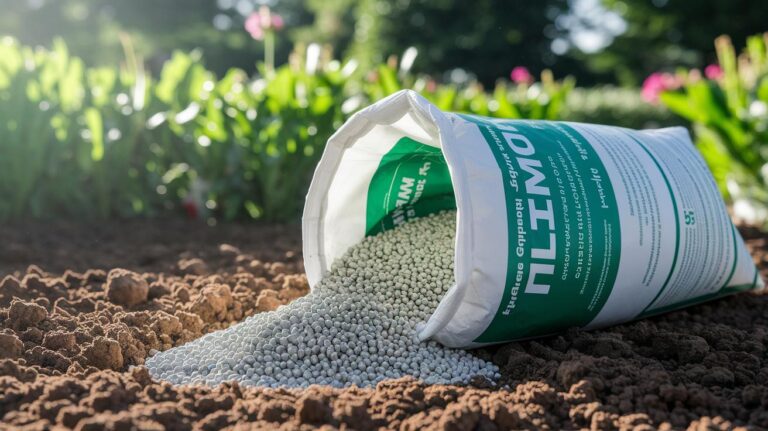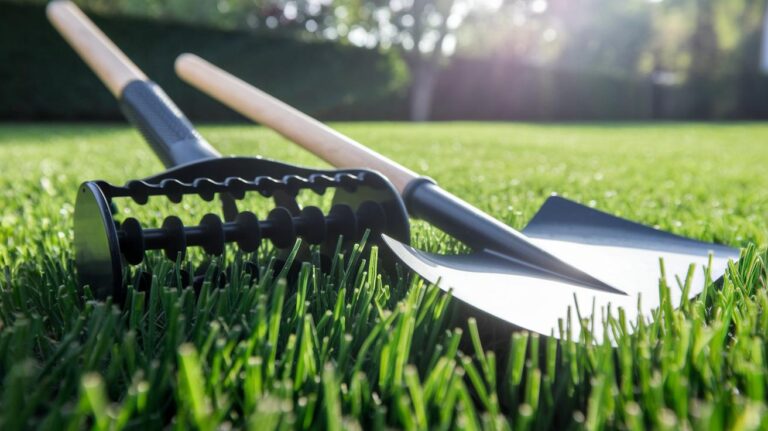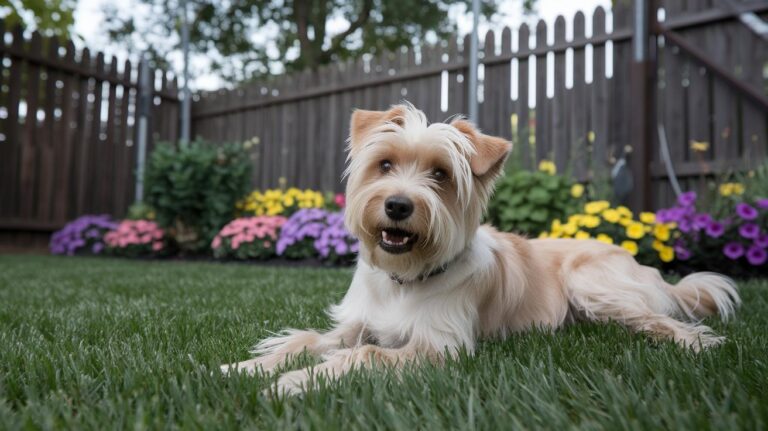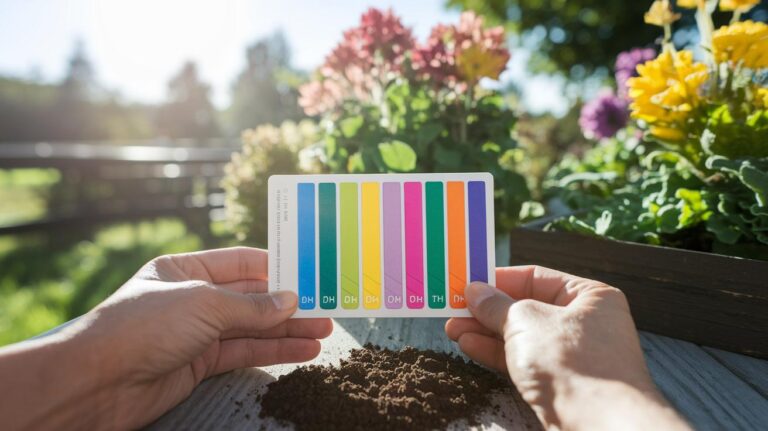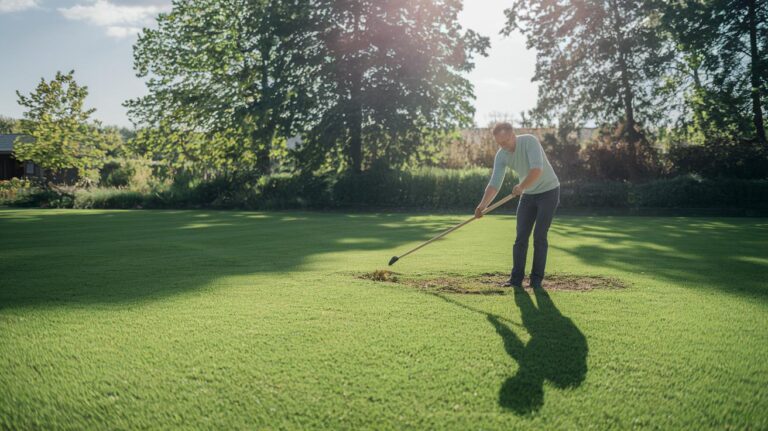Best Aeration For Lawn Yields Lush Green Growth
Ever stepped onto your lawn after a rain and felt your shoes sink into squishy mud?
That soggy letdown? It’s soil compaction (when crowded ground squeezes thirsty roots) letting water run off instead of soaking in.
Aeration (giving your grass room to breathe) pulls out tiny soil plugs, pokes holes with a garden fork, or sprinkles a mix of sand and compost (decayed organic matter that feeds soil).
Then watch your lawn come back to life with thicker green blades, fewer bare spots, and a happy bounce underfoot. I’ll admit, I sometimes forget to aerate until my shoes get stuck.
Ready to pick the right aeration method for your yard?
Let’s dig into core aeration, spike aeration, and liquid aeration so you’ll have that springy green carpet again.
Comparing Lawn Aeration Methods: Core, Spike, and Liquid
Got a lawn that feels packed tight like a sidewalk? That’s soil compaction (crowded soil squeezing roots). Aeration helps your turf take in air, water, and nutrients. You’ll see a springy bounce underfoot before you know it.
You’ve got three go-to methods: core aeration, spike aeration, and liquid aeration. Each one has its perks and quirks. By the way, my dog loves rolling on a freshly aerated lawn. But back to choosing the best fit for your yard.
| Method | Compaction Relief (eases soil crowding) | Thatch Reduction (thins dead grass layer) | Labor Intensity | Cost | Suitability |
|---|---|---|---|---|---|
| Core | High | Significant | Moderate | Moderate | Heavy compaction, large lawns |
| Spike | Low | Limited | Low | Low | Light compaction, small lawns |
| Liquid | Minimal | None | Minimal | Low | Routine maintenance, light compaction |
Core aeration yanks out tiny plugs to open the soil and boost root growth. Spike aeration pokes holes with simple tools for a quick lift. And liquid aeration uses a special solution for a low-effort refresh.
For more on plug removal, see the Core Aeration Benefits section. To learn about spike tool drawbacks, head over to Spike Aeration Limitations.
Best Aeration For Lawn Yields Lush Green Growth
Ever feel like your yard is so packed that rain just rolls right off? That squished soil (soil compaction, when ground is pressed so tight roots can’t breathe) leaves grass thirsty. Core aeration (pulling out little soil plugs) is one of the best fixes I know. You pull one-inch cores about two to four inches apart – now roots have room to breathe and stretch.
This plug pulling has big payoffs. Lawns stomped by kids or covered in a thick mat of old thatch (dead stems and roots over half an inch) bounce back fast! The holes suck in air and water, so grass slurps up moisture instead of letting puddles sit. I did it once and saw my yard go from spongy to springy in days.
And here’s my favorite part – roots start diving down into cooler, damp layers below. Um, the plugs break up in a week or two, mixing right back into the soil as organic matter (rotten plant bits that feed your grass), so you need less fertilizer. With roughly twenty to forty holes per square foot, your grass can dig deep for water and nutrients. Pretty great.
Spike Aeration Limitations for Lawn Care

Spike aeration is like giving your lawn a quick lift. Instead of yanking out plugs of soil (small cylinders of dirt), you poke holes with solid tines (pitchfork prongs, aerator shoes, a rolling push aerator, or a tow-behind spike machine). Those one- to two-inch holes refill almost as fast as you make them. It’s a fast pick-me-up, not a deep rescue.
You might hope it eases soil compaction (when dirt gets packed tight), but the holes close up in no time. Dirt squeezes sideways (lateral compaction) and pinches roots again. If kids or pets tromp around, you’ll watch the gaps vanish before grass can wiggle its roots. Quick fix? Yes. Lasting change? Not so much.
Spike aeration shines on small lawns with light compaction and under half an inch of thatch (dead grass bits). It’s tidy, no plugs to pick up, and your turf hardly notices, so your mower hums happily. Have you ever tried it? Nice and neat.
But don’t skip deep core aeration (the kind that pulls out plugs) now and then. Your lawn might lose that bouncy, springy feel. Use spike tools for quick upkeep, and schedule a plug-removal session when compaction really bites.
Aeration Timing: Best Season and Schedule for Your Lawn
Picking the right moment for aeration (making tiny holes in soil) helps your grass spring back to life. You want soil that’s cozy and a bit damp, not soaking wet and not brick hard. If the ground’s frozen or bone dry the tines (spikes on the tool) just rip turf or skip over it. Aim for a day or two after a light rain or give your yard a good soak and wait 24 hours before you start.
Warm-Season Grass Aeration
Warm-season grasses like Bermudagrass and Zoysia do best when you aerate in late spring to early summer. Look for soil temps around 60°F so roots are wide awake and can reach fresh air pockets. Aerate just before it really heats up. Then water gently, about half an inch every few days, to help those holes close up nicely. Most yards only need this once a year but if kids, pets, or patio chairs beat down the turf you might sneak in a second round in midsummer.
Cool-Season Grass Aeration
Tall Fescue and Kentucky Bluegrass love an early fall aeration. The earth still holds summer warmth and that jump-starts new roots before winter dormancy. Pull your plugs about four to six weeks before the first frost. Then overseed and water every day or two for two weeks so fine grass fills in the gaps. One session a year usually does the trick. But lawns on heavy clay or ones that carry a lot of foot traffic may enjoy a quick spring top-up, too.
For sandy soil spots that rarely get stamped on every two to three years is plenty.
Equipment Options: Manual, Gas-Powered, and Electric Aerators
Aerating means pulling plugs of soil so air, water, and nutrients can reach grass roots. It’s like giving your grass tiny straws to breathe. Ready to pick a tool?
Manual core aerators cost about $25 to $90 and work best on lawns under 5,000 square feet. You plant your feet, twist the handles, and pull up a chunk of earth. You’ll feel the warm earth crumbling between your fingers, it’s a real upper-body workout. But oops, your arms might protest if you do too much.
Gas-powered push-behind aerators start around $1,430 for a new model and can climb to $6,640. Not ready to buy? Home centers rent them for about $70 for four hours or $105 a day. The engine drives tines (metal prongs) deep into heavy soil so you can zip across medium to large lawns. You’ll hear that steady roar, and your back will thank you for skipping all the manual tugging.
Electric aerators run on battery power and cost between $250 and $600. They slice two- to three-inch holes in light to moderately compacted soil (soil pressed hard). No fumes and no cords to trip over. They’re quiet neighbors and easy on your arms, perfect for small to mid-size yards.
Tow-behind core aerators hitch to a garden tractor or ride-on mower and usually run $50 to $380 for a consumer version. It’s like dragging a big comb across your lawn, punching straight holes for even coverage. By the way, my cat loves sunning on the freshly aerated turf. Industrial tow-behinds can cost thousands but really pay off on extra-large properties.
| Tool Type | Cost Range | Lawn Size | Key Features |
|---|---|---|---|
| manual core aerator | $25–$90 | small (under 5,000 sq ft) | hand-powered, spot aeration, muscle work |
| gas-powered push-behind | $1,430–$6,640 | medium to large | engine-driven tines, rental options, deep cores |
| electric aerator | $250–$600 | small to mid-size | battery-powered, quiet, 2–3-inch holes |
| tow-behind tractor aerator | $50–$380 | large | tractor attachment, fast coverage, adjustable depth |
Preparing Your Lawn: Steps Before and After Aeration

-
Mow your grass to about 2 or 3 inches high. That lets the aerator tines (prongs) reach the soil without tearing long blades. Cleaning up clippings helps you spot each plug (soil cylinder) and stops clumps from piling up underfoot. I once forgot this and tripped over a grass heap, oops.
-
Clear sticks, stones, and toys, anything that might dent your aerator or make it bounce. A smooth surface keeps the machine steady and prevents weird scars in your turf. By the way, my neighbor’s toy truck left a stripe like mini zebra lines, funny but not ideal.
-
Water the yard about a day before aerating. Soak until the soil feels damp but not muddy. Think of your lawn like a sponge: wet it, squeeze out the extra, then fluff it up. Moist earth pulls out plugs in neat cylinders instead of ragged chunks.
-
Flag sprinkler heads and irrigation lines with stakes or bright markers. You’ll dodge accidental dents and keep your system spraying evenly. After all, you want happy green grass, not surprise puddles.
-
Once you’ve aerated, leave those little soil plugs on your lawn for one to two weeks. They’ll crumble back into the ground and add organic matter (decayed plant bits that feed soil). It’s like giving your grass its own buffet.
-
Water about half an inch each week, split into two light sessions. This keeps plugs soft and roots happy. Too little water and the plugs dry out; too much and they’ll wash away.
-
Spread grass seed into the holes you made, early fall for cool-season grasses or late spring for warm-season types. Gently rake or roll so seeds hug the soil. Quick germination is all about tight seed-to-soil contact.
-
Test your soil pH first. Then topdress with compost (decayed organic matter that enriches soil) and a balanced fertilizer. If pH is below 6.0, sprinkle a bit of lime. Then give your lawn a break, no heavy stomping until those new green shoots look solid.
Cost Comparison: Renting vs Buying Lawn Aerators
Thinking about whether to rent or buy your lawn aerator? It’s like borrowing your neighbor’s mower vs owning your own. Renting a core aerator (a machine that pulls little plugs of soil from your lawn) runs about $98 per day, plus you’ll leave a $150 deposit. Need just a few hours? A push-behind model is about $70 for four hours or $105 for the whole day. You’ll feel the cool, damp plugs pop free and skip the storage drama!
If you’re eyeing repeat use, buying might make sense. A manual core aerator (you step on it to pull out soil plugs) costs $25 to $90. Spike tools, like aerator shoes (tiny spikes on a shoe you strap on) for under $20 or a spike fork (a big pitchfork with spikes) for $30 to $130, are even cheaper. Got a tractor? Tow-behind core aerators start at $50 and top out near $380 for consumer-grade units. Spike tow-behind models (just poke holes, no plugs) range from about $85 up to $1,150.
Hiring a pro is another option. They usually charge about $0.02 to $0.10 per square foot, depending on your lawn size and how booked they are. For yards over 5,000 square feet, you’ll often save money by renting gear yourself. Curious about the exact lawn aeration cost? That breakdown can help you nail down your budget.
So, where does that leave you? Think about your yard’s size and how often you’ll aerate. Small lawns often pay off fast if you grab a manual core aerator. Big lawns? Renting gear probably gives you the most bang for your buck, without that hefty purchase price upfront.
Special Considerations: Soil Type and Turf for Aeration Success
Have you ever stepped on your lawn and felt it pack down like a brick? That’s clay soil (soil with tiny particles that stick close together). Under the warm sun it dries hard, making it tough for grass roots. So once a year, grab a core aerator (a tool that pulls out small plugs of soil). Push the metal prongs down about 3 inches deep and space the holes 2 inches apart. This breaks up clods so roots can spread and breathe again.
Sandy soil (soil with bigger grains that drain water fast) feels loose and cool under your fingers. It usually only needs aeration every two to three years. When you do, make holes about 4 inches apart. Too many holes can turn sandy patches into a crumbly mess. Wider spacing keeps everything balanced.
Different grasses like their stretches at different times. Cool-season grasses (varieties like tall fescue and Kentucky bluegrass) are happiest with aeration in early fall. The cool breeze helps new roots take hold before winter. But for warm-season grasses (like bermudagrass and zoysia), wait until late spring. They wake up then and love fresh air pockets.
Do little feet or playful paws wear down your turf? Aim for aeration twice a year to keep soil compaction (when soil is pressed so tight roots can’t get through) at bay. By the way, I once skipped this step and my lawn stayed packed all summer. And if you’ve just laid new sod (ready-to-grow grass strips), hold off for at least a year before poking holes. Let those young roots settle in first.
Final Words
We dug into core, spike, and liquid aeration, weighing compaction relief, thatch reduction, effort, and cost.
Then we lined up timing tips for warm- and cool-season grasses and eyed the right tools, manually or machine powered.
We walked through prepping the turf, tweaking based on soil type, and balancing rental versus buy.
Now you’ve got a clear path to stronger roots and greener blades. Here’s to choosing the best aeration for lawn and watching it thrive.
FAQ
What is the best aeration method for lawns?
The best aeration method for lawns is core aeration, which removes soil plugs for lasting compaction relief and significant thatch reduction.
What month is best to aerate a lawn?
The best month to aerate a lawn depends on grass type: early fall for cool-season grasses and late spring to early summer for warm-season grasses, with soil moist but not soggy.
What types of lawn aerators are available?
The types of lawn aerators available include core (plug) aerators that extract soil plugs, spike aerators that punch shallow holes, and liquid aerators that boost oxygen with a solution.
Which aerator is best for small lawns?
The best aerator for small lawns is a manual core aerator or spike aerator shoes, since they’re low cost and low labor, ideal for light to moderate compaction in tight spaces.
What is a plug (core) aerator?
A plug (core) aerator removes small soil plugs to relieve compaction and reduce thatch, letting plugs decompose naturally to enrich soil and support deeper root growth.
Should I rent or buy a lawn aerator?
You should rent or buy a lawn aerator based on lawn size: rent a gas-powered core aerator for large yards and one-off jobs; buy an affordable manual aerator for small yards and routine use.


